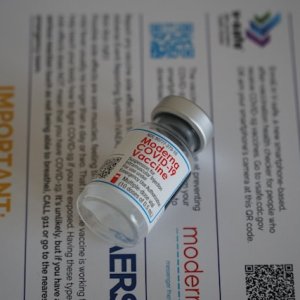New Payment Models Can Increase Access to Innovative Medications

STORY INLINE POST
Q: How will Novartis’ US$20 million investment in Mexico for 2019 be allocated?
A: At the World Economic Forum, Novartis’ CEO met with Luz María de la Mora, Deputy Minister of Foreign Trade at the Ministry of Economy, and committed US$20 million to Mexico. This sum is part of Novartis’ 2015 commitment to invest US$50 million in the country by 2020. At this point, we have invested over half of that promised amount. We expect to continue investing in the country as the pharmaceutical industry expands thanks to Mexico’s growing population.
The investment will go to clinical research, an area with significant opportunities in Mexico. In 2018, Novartis invested US$3.5 million to perform over 70 clinical trials in several therapeutic areas in Mexico.
Novartis has only five Global Service Centers and we decided to install one in Mexico in 2015 because the country offers an excellent location, is cost-competitive and has many talented professionals. We have high expectations for this center as it continues growing. We now perform several operations here that were previously done in the US and other Latin American countries.
Q: How is Novartis collaborating in the introduction of innovative medicines to the Mexican market?
A: Novartis has one of the strongest pipelines in the industry, which allows us to launch a large number of new products per year. We are increasingly focusing on oncology, mental diseases and cardiology. Recent technological advances are allowing for the discovery of new medications at a faster pace. Mexico’s regulatory system must adapt to the growing number of new medications and we are developing new models to bring innovative medicines closer to the Mexican population.
In developed countries, about 10 percent of the population has access to innovative medications. In emerging countries, these are only available to 1 percent of the population. The pharmaceutical industry has been unable to bring its products closer to those who need them. A way to fix this is through innovative access models in which the public sector pays only for results. We are talking with local authorities to introduce these models, which forces us to ensure that the medications we sell benefit the patient. This will be increasingly important with the arrival of personalized medicine, which allows laboratories to tailor their products to ensure they are useful for patients.
We have also made significant advances in our transformation area, which focuses on how technologies like AI and social media can better support patients during their journey fighting a disease.
Q: How will Alcon’s spinoff help Novartis strengthen its position in the pharmaceutical industry?
A: Alcon separated from Novartis on April 4, 2019. This will allow Alcon to strengthen its position in the ophthalmic products market and will allow Novartis to strengthen its commitment to certain therapeutic areas. From the division, we kept ophthalmologic medicines. We will focus on our medicine portfolio, as our pipeline has extremely interesting products that will enter the market in the next few years.
Q: How did Novartis help Centers of Excellence to improve treatment of diabetic patients?
A: These centers help health institutions with which we collaborate through the incorporation of best therapeutic practices, from opportune diagnosis to adherence to treatment and support for the patient’s family. Often, institutions have all the necessary tools for a successful treatment plan but they do not know how to build one. In these cases, we help them to use their own tools to create effective protocols for the correct management of diabetic patients. We identified several areas we can improve to make treatment more efficient and give patients what they truly need. We have replicated this model for patients with heart failure and have had great results.
Novartis has multiple research laboratories focused on therapeutic areas, including neuroscience, oncology, respiratory diseases, dermatology and immunology. The company has 10 potential blockbuster launches planned for the next years.
























